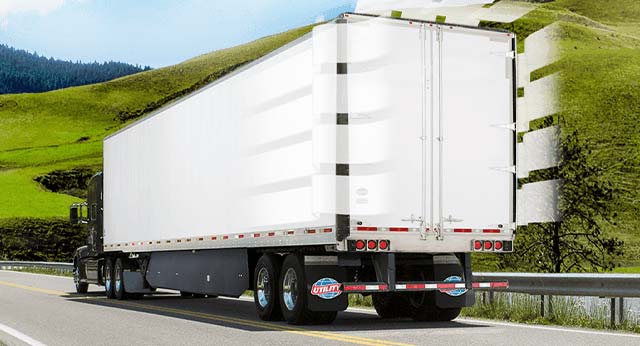
Aerodynamic Technologies Test Results are in
Even as the United States has either attained or is on the verge of attaining energy independence, fuel sources, prices and the resulting impacts of fuel on the environment continue to cause the trucking industry to take pause. More and more goods are being shipped thanks to the Internet, and technology has made it easier than ever for small business owners to open up shop, and this, in turn, requires the delivery of infrastructure elements, machinery and more.
In fact, fuel savings remains such a big deal that industry leaders like Utility Trailer Manufacturing Co. have taken it upon themselves to undergo scrutiny and embark upon testing of new products and designs to improve fuel efficiency for drivers. One recent study involving Utility saw the manufacturer partner with MVT Solutions to test Utility’s Aerodynamic Side Skirt (USS) and Aerodynamic Tail (UAT) features.
According to the Associated Press, testing revealed that when the USS and UAT were combined, the average savings was 646 gallons per 100,000 miles driven. This can translate to fuel savings that reach into the tens of thousands of dollars or even more annually depending on fleet size and operating area.
Utility’s Craig Bennet, Senior Vice President or Sales and Marketing, says of the testing, “Fuel economy is the easiest and fastest way to increase your bottom line. We believe that the USS and the UAT, when used together, will generate the best ROI in the aerodynamic segment of the industry. Additionally, based on the positive test results from MVT Solutions, we developed a fuel savings calculator on Utility’s website to give fleets an idea of how much they could potentially save by using our aerodynamic products.”
What these tests mean for your business is that truck manufacturers are listening to the concerns of owner-operators and fleet management professionals when it comes to a desire to see greater efficiency and savings on the road. Although aerodynamic design is a focal point for long-haul commercial vehicles, the move toward increased testing demonstrates that truck manufacturers are invested in a sustainable future, both for the environment and for a trucking industry currently undergoing a rapid evolution.

